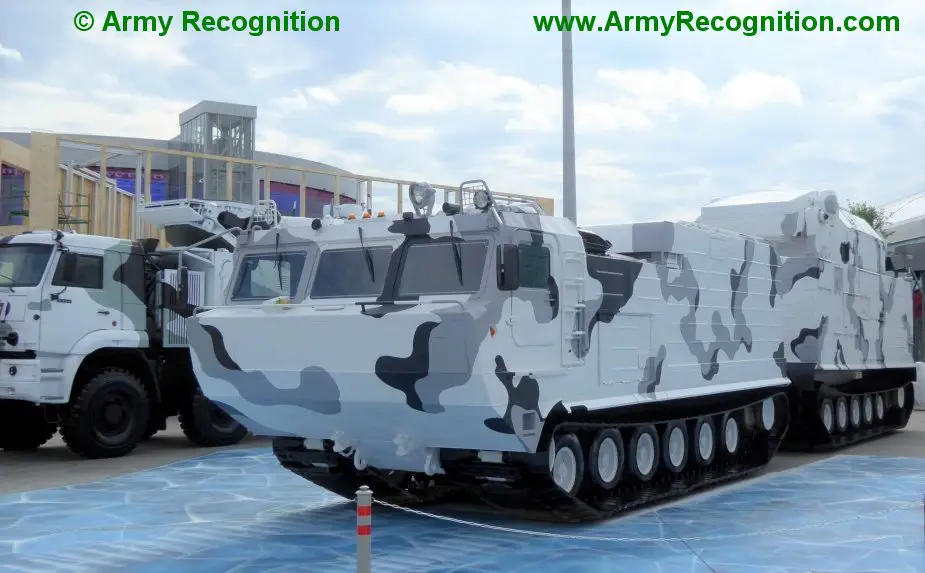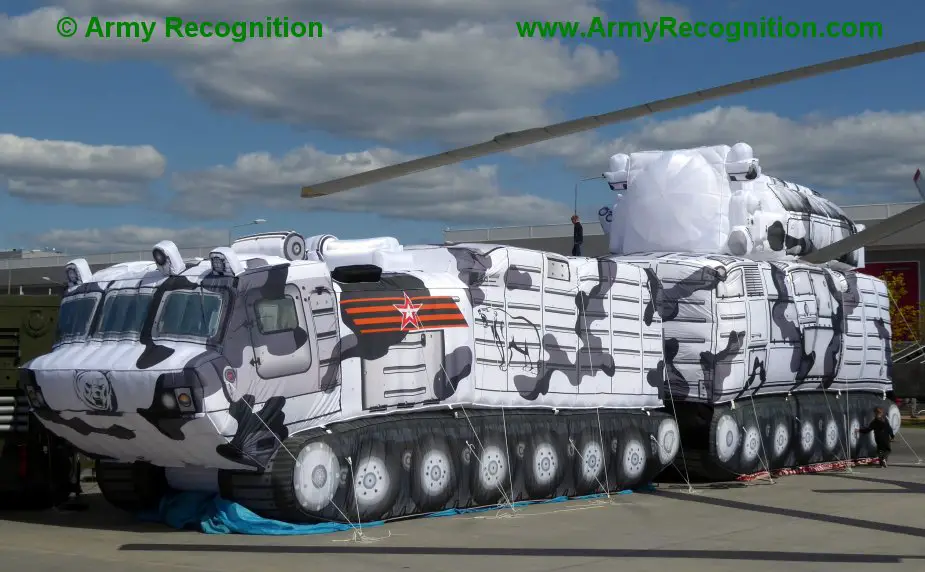Russian Arctic air defense contour close to completion
The creation of the main elements of the Russian Arctic air defense is nearing completion. The region has developed into a place of a standoff between various countries of late. Russia has been therefore creating infrastructure and defense facilities in northern latitudes in case the situation aggravates. The Izvestia daily writes about the means Russia has in the Northern Sea Route and defense prospects in the strategically important direction.
Follow Army Recognition on Google News at this link

9A331MDT combat vehicle of 9K331MDT (Tor-M2DT) air defense system designed for the Arctic theater of operations (Picture source: Army Recognition)
Russian Defense Ministry sources said the creation of the main air defense elements in the Arctic is nearing completion. The Northern Fleet and the United Command of Northeastern Forces (OKVS) are in charge of the defense of the Russian North. In 2014, the Northern fleet withdrew from Zapad strategic command and became a self-sufficient force. It is in charge of Russian Arctic territories up to Wrangel Island. OKVS is in charge of the defense of other northern borders.
The protection of northern territories was vital in Soviet times. The USSR built a lot of Arctic airfields and created long-range fighter jets. The creation of the northern air defense was close to completion by the early 1990s. However, the Soviet collapse and economic problems triggered the disbandment of practically all air defense and air force units. In 2010s, Russia received financial possibilities and new technologies to revive Arctic defense.
Russia began creating a complex and interrelated security system. Strongholds were built in Arctic islands, such as Alexandra Land in Franz-Joseph Land Archipelago, Kotelny Island in Novosibirsk Islands, Wrangel Island and others. They are a set of closed-cycle facilities with everything necessary for long autonomous operation and an airfield. They accommodate a tactical group comprising Bastion coastal missile battalion, an air defense Pantsir-SA battery, air, radar and logistical units. The radar unit detects air targets and controls a section of the Northern Sea Route and the airspace over it. Thus, the stronghold is an advanced post of early radar detection. The commandant’s office operates the airfield. The strongholds build airstrips for year-round operation and delivery of cargoes and reinforcements in any time. Such an airstrip has been built in Nagurskoe airfield in Alexandra Land.
Bastion battalion protects the coast and Pantsir-S defends the base. Two tactical groups have been created: the 71st in Arctic Trilistnik base in Alexandra Land and the 99th in Severny Klever base in Kotelny Island. The tactical groups will be created in other strongholds under construction. They will increase the detection range of air targets by several hundred kilometers and protect the Northern Sea Route and the coast from sea weapons of the adversary.
The air defense of the Arctic borders is entrusted to the 45th air force and defense army of the Northern fleet, as well as OKVS air force and air defense. The 1st air defense division protects the Kola Peninsula and Arkhangelsk region. The recently created 3rd division is in charge of the further area. It operates radar units and antiaircraft missile regiments. All the regiments of the 1st division have been rearmed with S-400.
Resonans-N radars are the backbone of the monitoring system. Ten radars with a range of one thousand kilometers have to be deployed in the North. They will create a total radar field over the Arctic territories and the Northern Sea Route. In the future, a network of over-horizon Container radars will create another zone of airspace control.
The Arctic airfield network is being reconstructed and revived. A large number of airstrips were built in Soviet time in Tiksi, Anadyr, Amderma, Rogachevo and other places. Some remained operational, but others were abandoned. The revival of the airfields and the deployment of logistical units there help rapidly redeploy fighter jets rather than constantly keep them in a harsh climate.
Another air defense guideline is the upgrade of MiG-31 fighter jet to MiG-31B level. The Northern and Pacific fleets currently have one squadron of the jets each. MiG-31 upgrade pace and the stocks of the jets give grounds to believe that two air regiments will appear. A new fighter jet regiment is likely to be formed in Rogachevo in Novaya Zemlya or in Amderma where Soviet air defense was based. Other MiG-31 units may be engaged to defend the Arctic. They will be armed with Kinzhal missiles to defend the airspace and strike at warships.
The air defense is also reinforced by missiles. New regiments have been deployed in Rogachevo and Tiksi. They are armed with S-300PS which will be replaced by S-400 and S-350 in future, the Izvestia said.

Dummy version of the 9K331MDT (Tor-M2DT) for deception or air/satellite reconnaissance, displayed at Army-2018 (Picture source: Army Recognition)
© Copyright 2020 TASS / Army Recognition Group SPRL. All rights reserved. This material may not be published, broadcast, rewritten or redistributed.


























